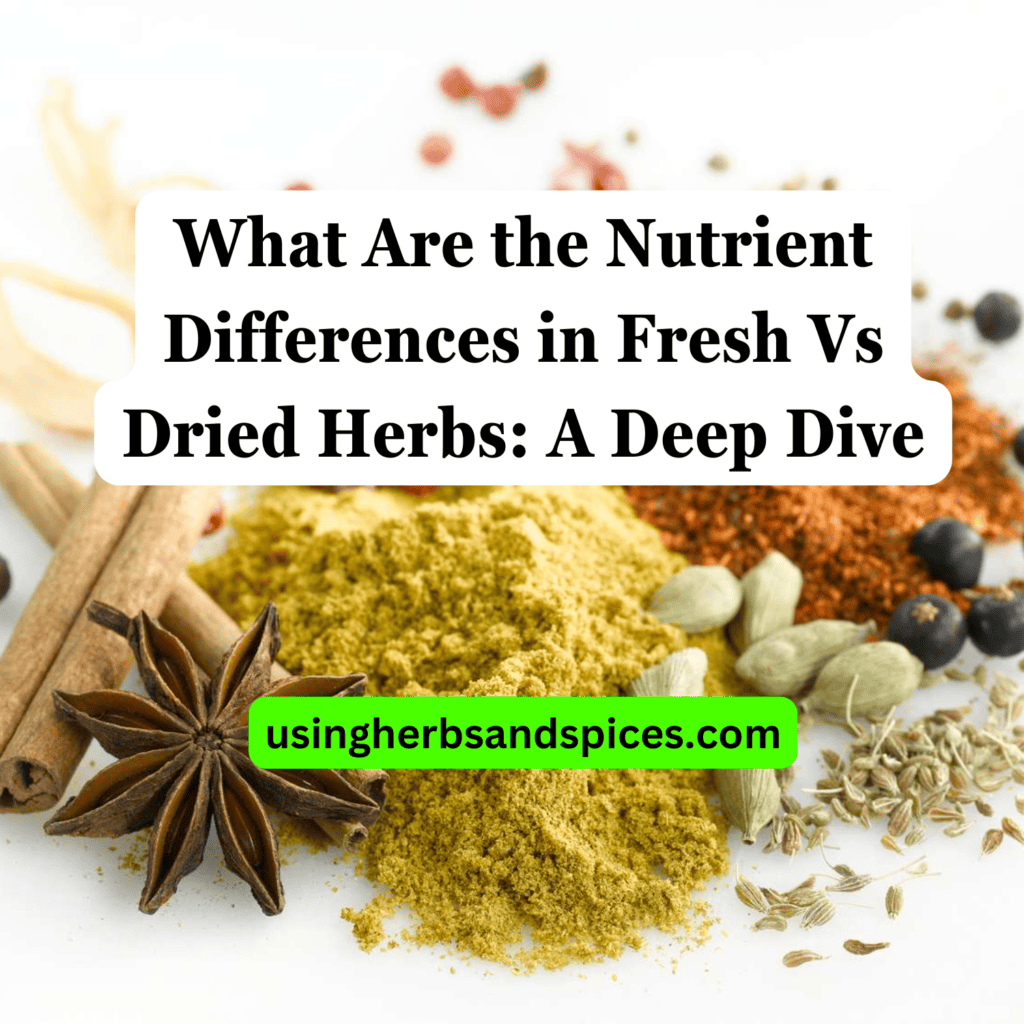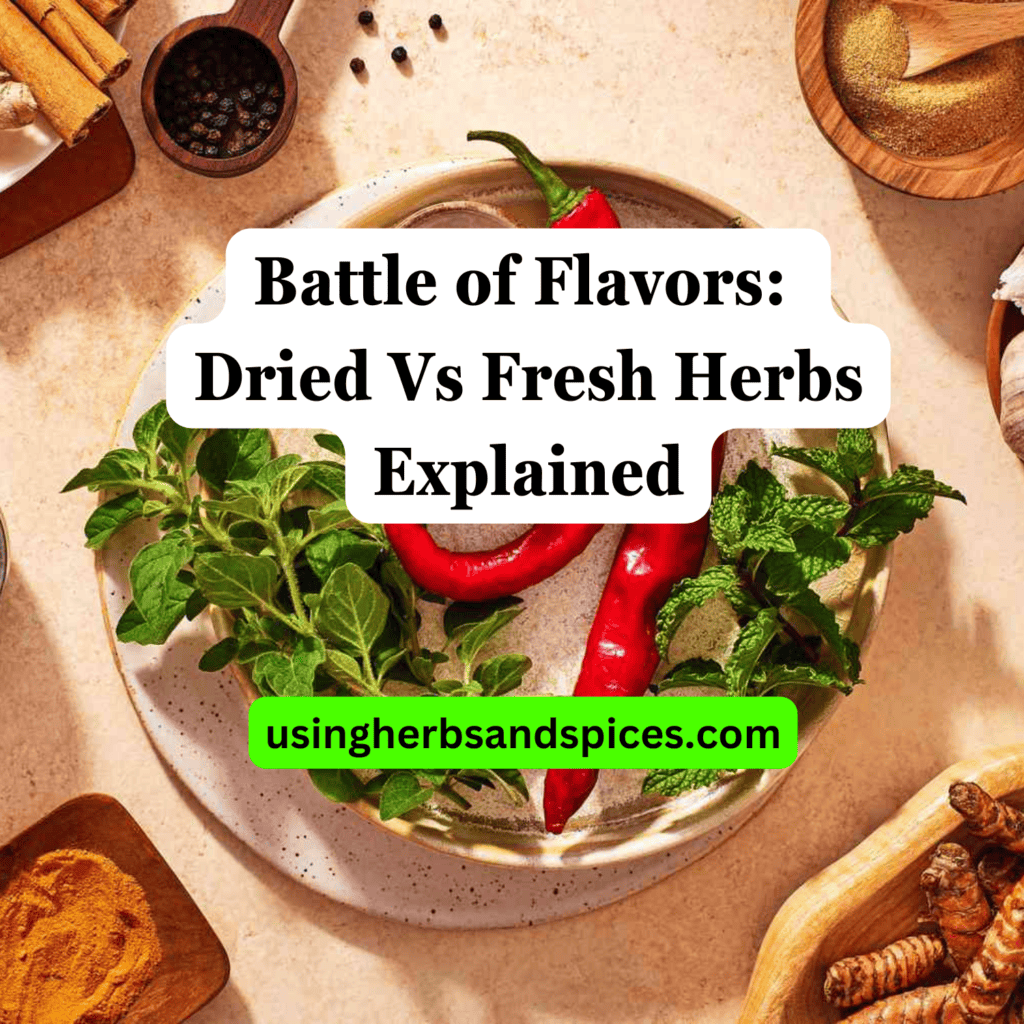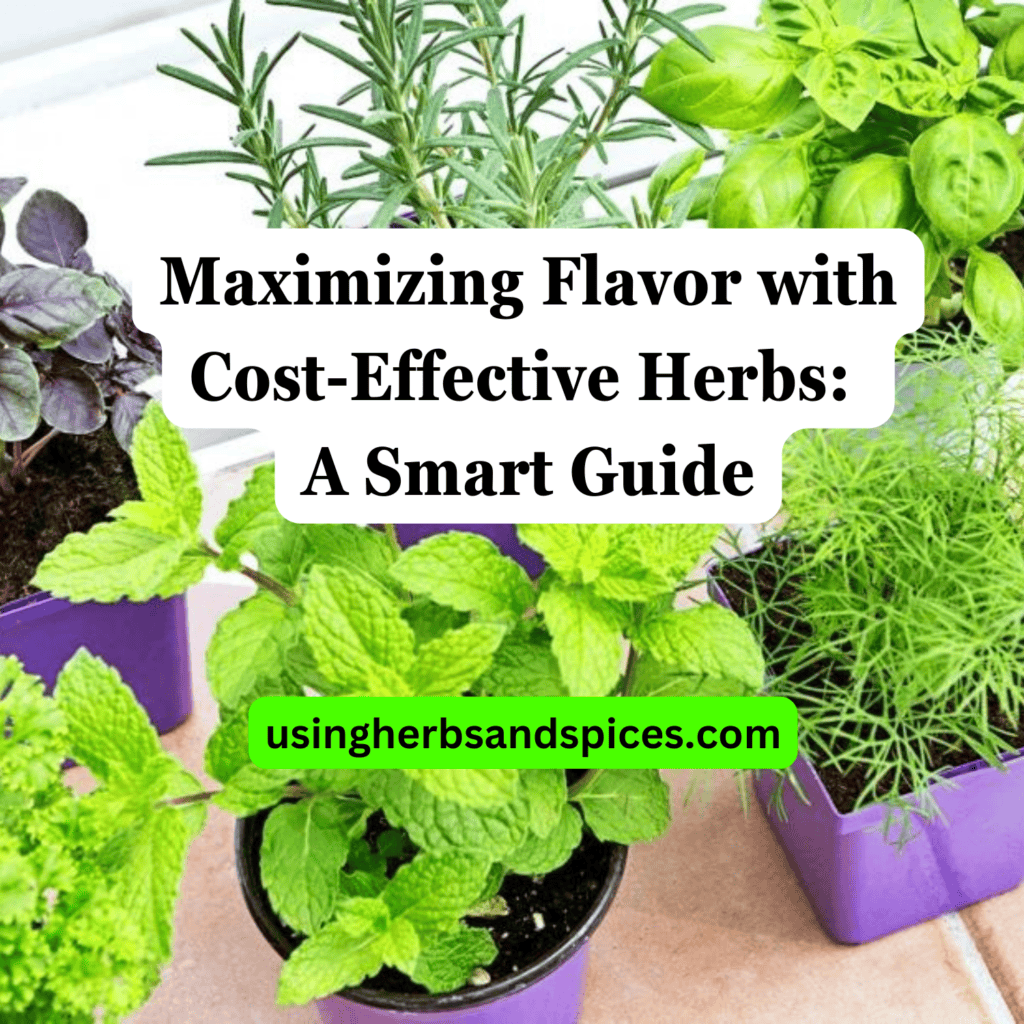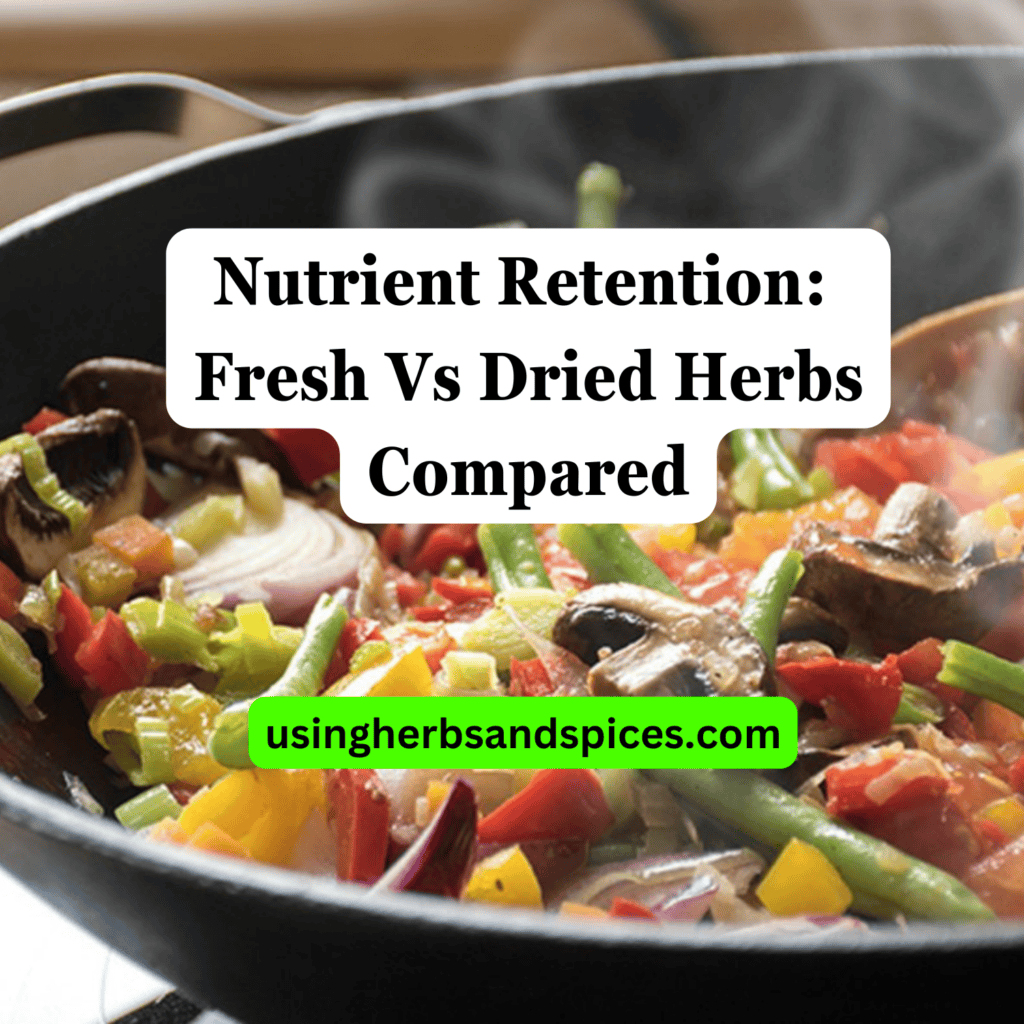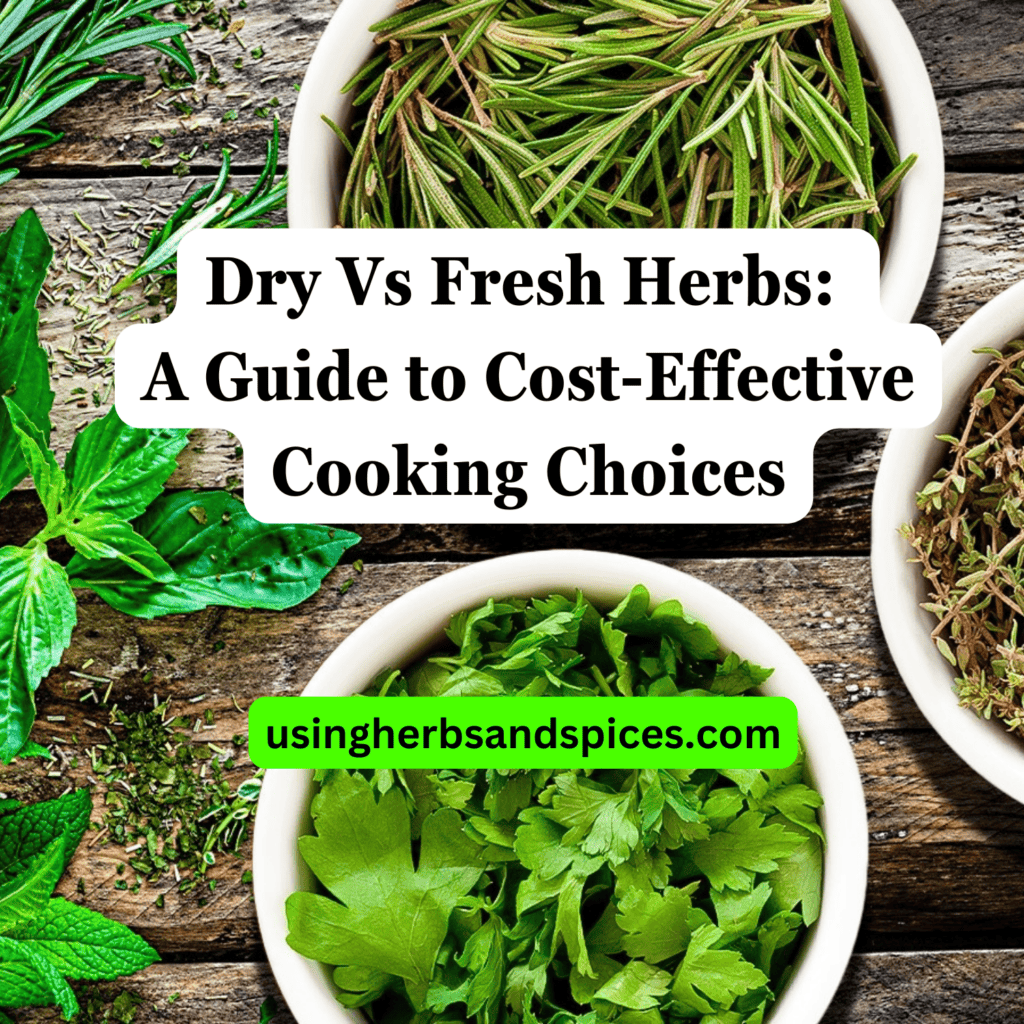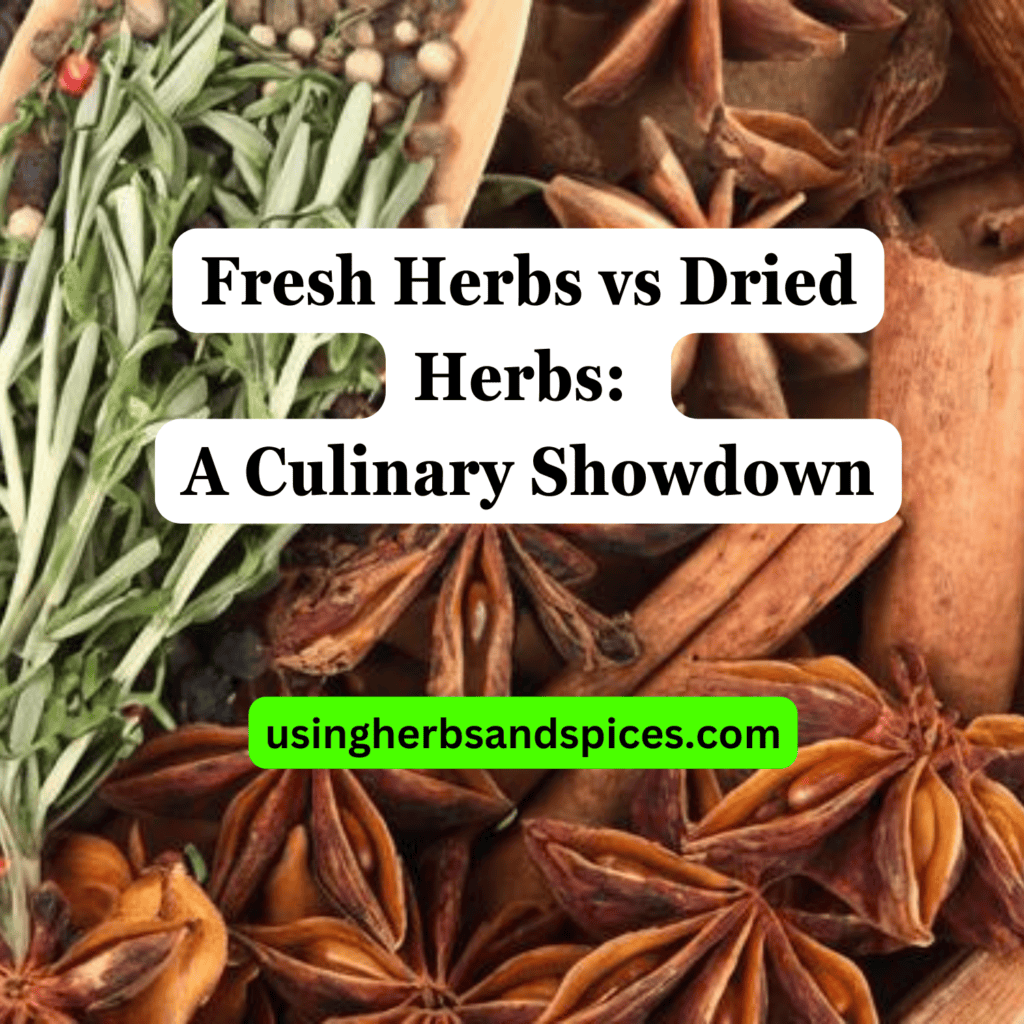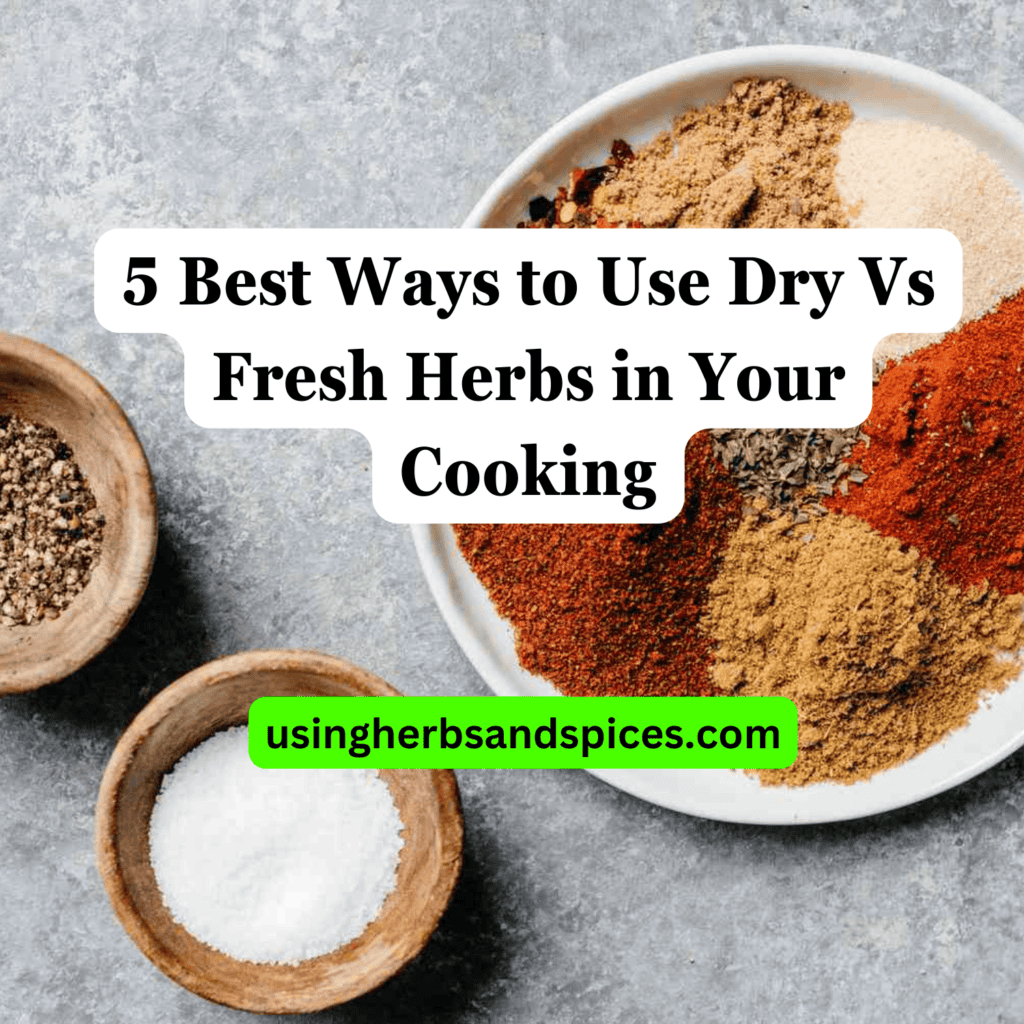SUMMARY: Dry herbs offer a longer shelf life and can be more cost-effective over time, while fresh herbs provide superior flavor and nutrition but may require careful storage to extend their utility. Choosing between them depends on usage, storage options, and personal taste preferences.
Ever find yourself puzzled over whether to choose fresh or dried herbs for your cooking to maximize flavor while keeping an eye on the budget?
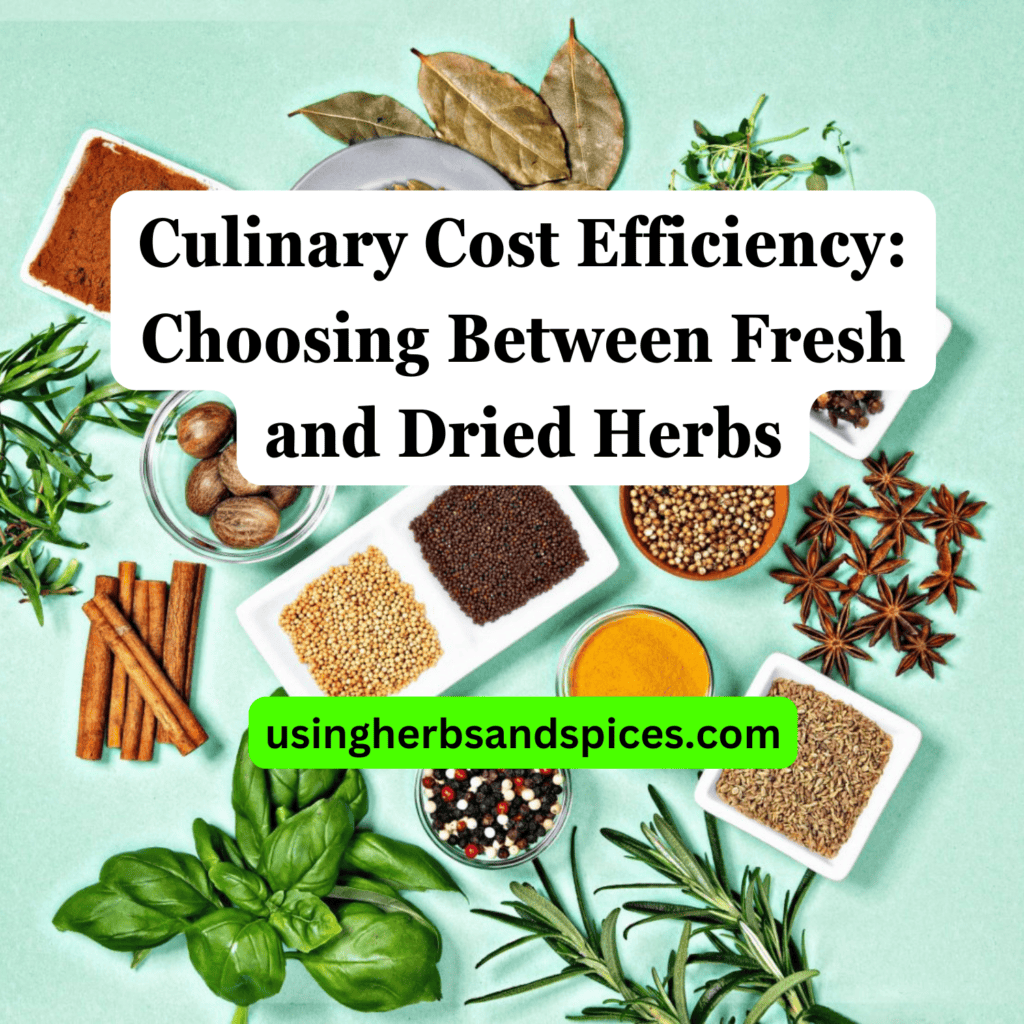
You’re not alone in this culinary conundrum.
- Understanding Dry Herbs
- The Case for Fresh Herbs
- Calculating Cost-Effectiveness
- Practical Tips for Herb Usage and Preservation
Continue reading to discover how to make the most out of your herb choices, economically and taste-wise.
Understanding Dry Herbs
Dry herbs, with their concentrated flavors and extended shelf lives, are a staple in many kitchens. Unlike their fresh counterparts, dry herbs undergo a dehydration process that removes moisture while preserving the essential oils that give them their unique flavors. This process not only extends their usability well beyond that of fresh herbs but also alters their culinary application. Typically, the cost per use of dry herbs is lower due to their longer shelf life and the fact that a smaller quantity is required to achieve the desired flavor in dishes.
The preservation of dry herbs means they can be stored for months or even years without significant loss of potency, provided they are kept in a cool, dry place away from direct sunlight. This aspect makes them particularly appealing to those looking to minimize waste and maximize their investment in kitchen staples. Whether it’s the earthy whisper of dried oregano in a tomato sauce or the sharp, piney note of rosemary in roasted meats, dry herbs offer a cost-effective and convenient way to enrich a wide array of dishes.
The Case for Fresh Herbs
When it comes to the culinary use of fresh herbs, their unparalleled flavor profile is often the winning argument. Unlike their dried counterparts, fresh herbs contain oils that provide a vibrant taste and aroma which can significantly enhance the flavor of any dish. This flavor superiority comes with a caveat, though; it often comes at a higher cost, especially if purchasing out of season. However, the price per bunch can sometimes be misleading. Considering their potency, less volume may be required to achieve the desired taste impact, potentially leading to a more favorable cost comparison than one might expect.
Apart from their taste, fresh herbs offer a variety of other benefits. Nutritionally, they are superior. The process of drying herbs can lead to the loss of vitamins and antioxidants that fresh herbs readily provide. From a cost perspective, this nutritional advantage suggests that fresh herbs could offer more value for your money, contributing not just to the flavor of your dishes, but also to the health benefits they bring.
However, the cost per fresh bunch versus longevity and usage can become factors that deter consumers. Fresh herbs have a relatively short shelf life, which can lead to increased waste and, consequently, higher costs if not managed properly. This emphasizes the importance of planning and usage patterns in evaluating the cost-effectiveness of fresh herbs. For those who regularly cook and can efficiently incorporate herbs into their dishes, the higher upfront cost of fresh herbs might still represent a cost-efficient choice considering the enhanced flavor and nutritional value they provide.
Calculating Cost-Effectiveness
When analyzing the cost-effectiveness of fresh versus dried herbs, a multifaceted approach is required. Initially, the upfront cost may suggest dried herbs are more expensive; however, they offer more uses per purchase due to their concentrated flavor. For instance, it’s generally recommended to use one-third the amount of dried herb in comparison to fresh. This ratio significantly extends the usage of a single purchase.
Considering waste, fresh herbs can be a gamble. Their shelf life is limited, often leading to disposal of unused portions. Dried herbs, on the other hand, boast a shelf life of up to a year or more, reducing the frequency of repurchase and minimizing waste. Seasonality also plays a crucial role in this comparison. Fresh herbs can vary in price dramatically depending on the time of year, whereas dried herbs typically maintain a stable price point.
To contextualize cost efficiency, let’s assume the average household uses herbs in their meals three times a week. Over a month, the comparison leans towards dried herbs for routine cooking due to their longevity and consistent pricing. However, fresh herbs might show cost-effectiveness for special occasions or specific dishes where their distinct flavor is paramount.
Incorporating these considerations into our cost analysis reveals that while fresh herbs bring vibrancy and a punch of flavor to dishes, dried herbs offer unparalleled shelf life and economic value over time. The choice between fresh and dried depends on the culinary goals, frequency of use, and budget of each household, underscoring the importance of context in this cost-effective analysis.
Practical Tips for Herb Usage and Preservation
To maximize the cost efficiency and flavor of herbs, considering how you use and preserve them is key. Starting with fresh herbs, always wash and dry them thoroughly before storage. For herbs like parsley and cilantro, trimming the stems and placing them in a glass of water in the refrigerator can extend their freshness. Alternatively, wrapping them in a damp paper towel before refrigerating can also be effective. To prolong the life of fresh herbs even further, consider freezing them in olive oil using ice cube trays.
Dried herbs, while less perishable, also require proper care to maintain their potency. Store dried herbs in an airtight container away from direct sunlight and heat. This will help preserve their flavor and extend their shelf life. It’s also beneficial to purchase dried herbs in smaller quantities, as their flavor can diminish over time, even with optimal storage conditions.
Understanding when to use fresh versus dried herbs can also optimize both your budget and your culinary outcomes. Fresh herbs are best added towards the end of the cooking process or used in fresh preparations to preserve their flavor, while dried herbs are well-suited for longer cooking times, allowing their flavors to fully infuse the dish.
Maximizing Cost Efficiency: Fresh vs. Dried Herbs
In summarizing the comparison between the cost-efficiency of fresh versus dried herbs, this article has highlighted several key takeaways that can guide culinary enthusiasts in making informed decisions for their kitchens.
- Dry herbs offer a longer shelf life and generally a more concentrated flavor per use, making them a cost-effective choice for dishes where their robust flavor can shine through.
- Fresh herbs, while potentially more expensive due to their shorter shelf life, provide a burst of fresh flavor and nutritional benefits that can elevate a dish in ways that dried herbs cannot.
- The true cost-effectiveness of fresh versus dried herbs depends on factors such as seasonal price fluctuations, usage rates, and personal preference for flavor and freshness.
- Understanding how to properly store and preserve fresh herbs can extend their life and reduce waste, thereby increasing their cost-effectiveness.
- Both fresh and dried herbs have their place in the kitchen, and their optimal use varies by the type of dish, the desired flavor intensity, and the budget constraints of the household.
In conclusion, by considering the factors discussed, readers can make more informed choices about when to invest in fresh herbs versus when to rely on the convenience and longevity of dried herbs, striking a balance between cost, flavor, and nutritional value. The decision is highly personal and can be adjusted based on individual cooking styles, preferences, and economic considerations.
Culinary Cost Efficiency: Fresh Herbs Vs Dried FAQs
Are dried herbs more cost-effective than fresh ones in all scenarios?
Dried herbs can be more cost-effective than fresh herbs in many scenarios due to their longer shelf life and concentrated flavors, meaning a smaller quantity is needed for cooking. However, the cost-effectiveness also depends on the specific herbs in question, how frequently you use them, and seasonal price fluctuations. Fresh herbs may offer better value in terms of flavor and nutrition for certain dishes, despite their higher upfront cost and shorter shelf life.
How can I make fresh herbs last longer to get the most out of my purchase?
To extend the shelf life of fresh herbs, consider storing them in the refrigerator wrapped in a damp paper towel and placed in a plastic bag or, for some herbs like cilantro or parsley, standing upright in a glass of water covered loosely with a plastic bag. Some herbs can also be frozen, either whole or chopped, in ice cube trays with water or olive oil, for use in cooked dishes.
Do dried herbs lose their flavor over time?
Yes, dried herbs do lose their flavor over time as the essential oils, responsible for their aroma and taste, gradually diminish. To ensure maximum flavor, store dried herbs in a cool, dark place in tightly sealed containers and try to use them within one year. It’s also a good practice to buy smaller quantities that can be used up within a few months.
Is there a significant difference in nutritional value between fresh and dried herbs?
Both fresh and dried herbs offer nutritional benefits, including vitamins, minerals, and antioxidants. However, fresh herbs generally contain higher levels of certain vitamins, especially vitamin C. Dried herbs maintain their mineral content quite well. The difference in nutritional value may not be significant in typical culinary quantities, but it can be a consideration for those looking to maximize the dietary benefits of herbs.


